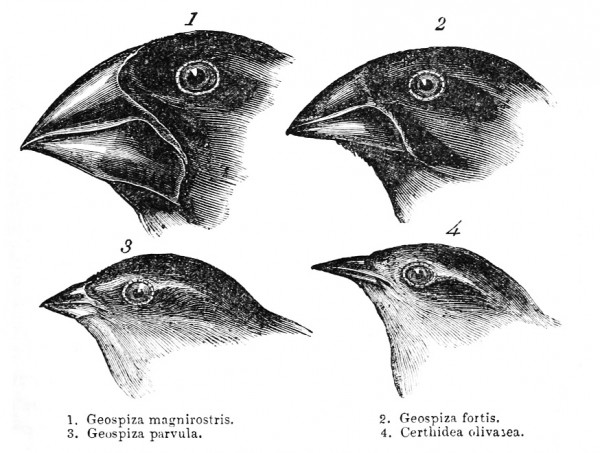Gene in Finches Shows Why Humans Have Different Faces
| Ana Verayo | | Feb 12, 2015 04:15 AM EST |
(Photo : Wikipedia) Scientists have identified the genome responsible for Darwin's finches and their different beak shapes.
Charles Darwin was the first to prove the theory of natural selection when he recognized the different beaks of finches were caused by the adaptation of these birds to their specific environment.
Researchers have now pinpointed the specific genome in the bird that gives their beaks different shapes.
Like Us on Facebook
Darwin arrived at the Galapagos Islands in 1835. He was surprised to observe different species of finch. The birds he collected apparently belonged to 15 species under the subfamily of Geospizinae.
The gene in this bird called ALX1 appeared to be different in birds that have round and pointed beaks. There were also slight variations and differences in the gene even if the birds belong to the same species.
Scientists further studied the genomes of 120 birds based on Darwin's finches. More evidence supports this claim.
Medium ground finches underwent significant genetic changes in the mid-2000s when a larger type of finch invaded their home. In the 1970s, a severe drought almost eliminated seeds, the finches' main food source.
The seeds that withstood the drought were larger and harder than the finches were used to feed on, making it more challenging for smaller birds.
After a generation, the beak size of newborns significantly evolved into larger ones. The climate then changed. Eventually, smaller seeds were again available for the birds and once more, the birds adapted by evolving smaller beaks.
The specific beak shapes of finches are attributed to the different versions of the gene ALX1. In humans, however, this exact gene can be linked to frontonasal dysplasia, a birth defect that results in misshapen infant faces.
This study also hypothesizes that ALX1 is probably the reason why humans have diverse face shapes and features, according to the magazine, Science.
Scientists believe finches first arrived in the Galapagos Islands some two million years ago. They evolved and adapted depending on what region they live in.
According to lead researcher Leif Andersson from Uppsala University, mutations that include minor effects on ALX1 can possibly contribute to the facial diversity of the human race.
This study was published and detailed in the journal, Nature.
TagsGene in Darwin's Finches Holds Clues Why Humans Have Diverse Faces, charles darwin, theory of natural selection, darwin finches beaks, galapagos islands, finches birds, beaks finches darwin evolution, why humans have different faces
©2015 Chinatopix All rights reserved. Do not reproduce without permission
EDITOR'S PICKS
-

Did the Trump administration just announce plans for a trade war with ‘hostile’ China and Russia?
-

US Senate passes Taiwan travel bill slammed by China
-

As Yan Sihong’s family grieves, here are other Chinese students who went missing abroad. Some have never been found
-

Beijing blasts Western critics who ‘smear China’ with the term sharp power
-

China Envoy Seeks to Defuse Tensions With U.S. as a Trade War Brews
-

Singapore's Deputy PM Provides Bitcoin Vote of Confidence Amid China's Blanket Bans
-

China warns investors over risks in overseas virtual currency trading
-

Chinese government most trustworthy: survey
-

Kashima Antlers On Course For Back-To-Back Titles
MOST POPULAR
LATEST NEWS
Zhou Yongkang: China's Former Security Chief Sentenced to Life in Prison

China's former Chief of the Ministry of Public Security, Zhou Yongkang, has been given a life sentence after he was found guilty of abusing his office, bribery and deliberately ... Full Article
TRENDING STORY

China Pork Prices Expected to Stabilize As The Supplies Recover

Elephone P9000 Smartphone is now on Sale on Amazon India

There's a Big Chance Cliffhangers Won't Still Be Resolved When Grey's Anatomy Season 13 Returns

Supreme Court Ruled on Samsung vs Apple Dispute for Patent Infringement

Microsoft Surface Pro 5 Rumors and Release Date: What is the Latest?










